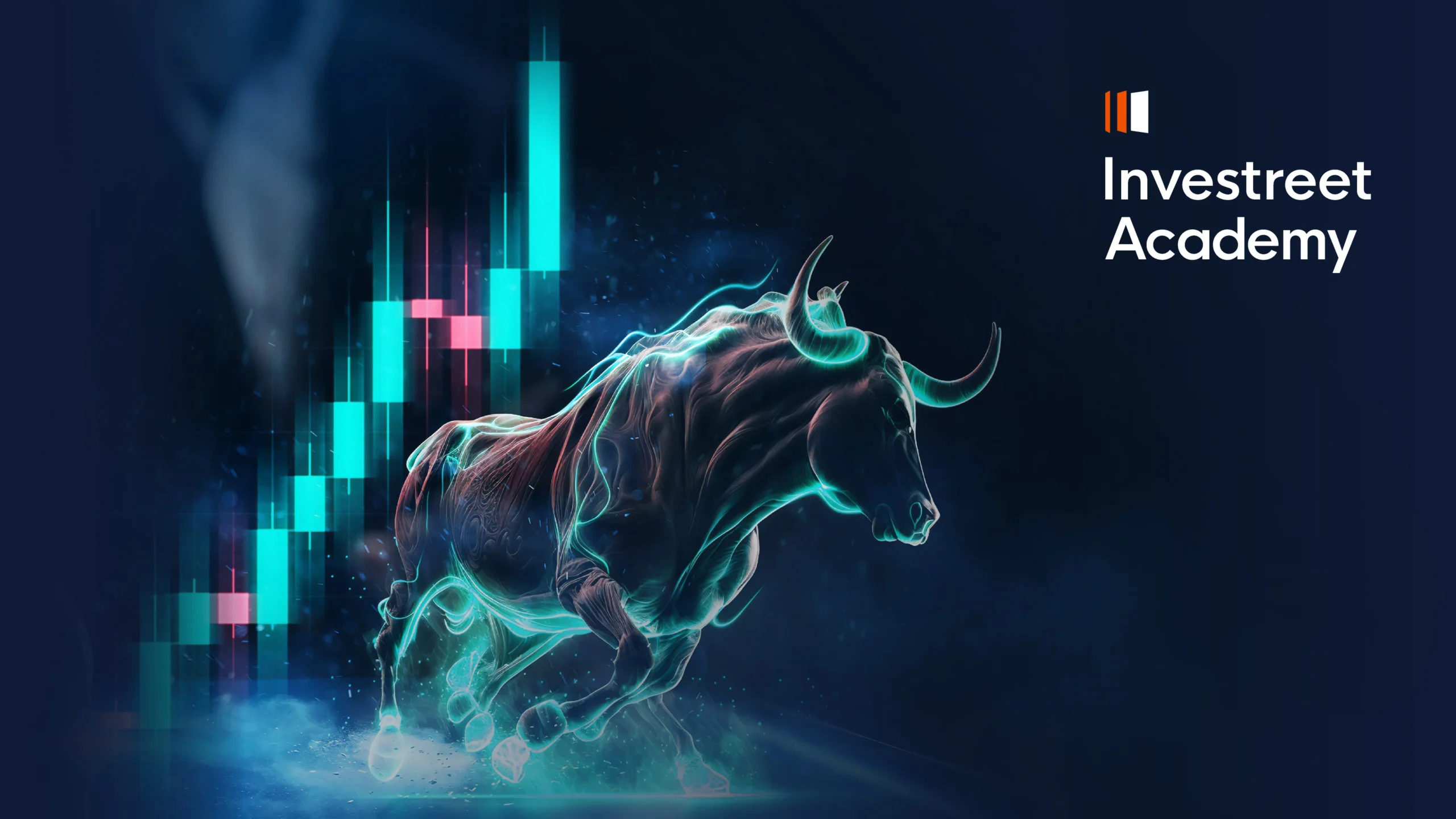Trader’s Guide: What is Forex Trading?
Forex refers to foreign exchange, where people, investors, banks, governments, or institutions buy or sell currencies. Whenever you need to convert your local currency to another country’s currency, this means that you’re taking part in the foreign exchange market. The exchange rate of currencies is not fixed. While trading currencies, investors benefit from the fluctuating exchange rate.
The forex market is the most liquid and largest in the world, with a daily traded capital of over $7.5 trillion, encompassing stock markets, commodity markets, currency pair trading, and other financial exchanges, such as futures and derivatives. Let’s delve into the details of the forex market types, what forex pairs are, and the key concepts in forex trading that traders must know.
What is Forex Trading?
Trading forex is an over-the-counter market, which is decentralized, unlike stock markets. Trading transactions are conducted electronically, with no physical currency or face-to-face interaction, as trading occurs through computer networks that connect traders worldwide. The market is open 24 hours a day, five days a week, from Monday to Friday.
The value of the world’s currencies, their exchange rate, or how much of one currency will buy how much of another currency, is determined by the supply and demand during the trading sessions. Supply and demand are also influenced by the country’s economic growth, inflation, the central bank’s monetary policy, and the country’s political situation. All of these factors impact the exchange rate of the currency pairs traded.
The Basics of Currency Pairs:
The foreign exchange market (forex) primarily revolves around currency pairs; all trading transactions in the market are conducted using these pairs. Each pair consists of two currencies: one is the base currency and the other is the quote currency. The exchange rate fluctuates depending on the value of each currency in the pair, which is influenced by the interest rates of the currencies involved. For instance, EURUSD; the BOE applies a lower interest rate while the US Federal Reserve applies a hawkish interest rate. The difference between these interest rates makes the currency fluctuate accordingly.
A currency pair compares the value of a currency versus another currency in the same pair. It indicates the amount required in the quote currency to purchase one unit of the base currency. While trading in the forex market, each purchase of one currency is simultaneously offset by the sale of another currency; however, the currency pair itself is considered as a single unit instrument that is bought or sold.
Currency pairs are quoted based on their bid and ask prices. The bid price is the price at which the forex broker will pay to the trader to exchange the base currency for the quote currency. Conversely, the ask price is the price that the broker will ask the trader to pay to exchange the base currency for the quote currency.
The currency pairs are classified into three types:
Major Currency Pair:
The major currency pairs are the most widely traded among the world’s currencies. All major currency pairs are associated with the US Dollar. Major pairs are categorised according to their daily volume for each pair. For instance, the EURUSD pair is the most liquid in the world due to its heavy trading volume. The base currency is the EUR, while the quote currency is the US dollar. Which can be interpreted like how many dollars you need to buy one euro? If the EURUSD quotes 1.13, this means that you need 1.13 U.S. dollars to exchange for 1 euro. Other major currencies such as:
- EUR/USD
- USD/JPY
- USD/CHF
- AUD/USD
- USD/CAD
Minor Currency Pair:
Minor currency pairs, which do not involve the US dollar, are also known as crosses. These pairs exhibit a wider spread and are less liquid compared to the major currencies. Minor currencies (crosses) such as:
- GBP/JPY
- EUR/GBP
- EUR/AUD
- AUD/JPY
- EUR/CAD
- NZD/JPY
- GBP/AUD
Exotic Currency Pairs:
This type of pair differs from the major and minor pairs. The exotic pair consists of one major currency and the other is for a smaller or less commonly traded economy, typically an emerging market. Their spreads are considerably wider, and they exhibit lower liquidity. Increased volatility may lead to more pronounced price fluctuations. So the exotic currency pairs are riskier. For example, the currency pair (USD/SGD). Other exotic currency pairs such as:
- USD/TRY
- EUR/TRY
- EUR/THB
- USD/HKD
What are the Forex Market Types?
There are three different types of forex markets
- Spot Forex Market:
The spot market refers to the immediate delivery for buying and selling a currency pair traded at the spot price. The spot price is the current market rate. Numerous participants are involved in the spot markets, including large commercial banks, investment banks, central banks, dealers, brokers, and individuals. The primary participants in spot trades are the large commercial and investment banks, which trade not only for themselves but also on behalf of their customers.
Spot markets benefit from high volumes of currency pairs being bought and sold, owing to significant liquidity, which offers a tight spread, enabling traders to maximise their profits and take advantage of low-cost trades. Furthermore, this characteristic renders spot markets less risky than other.
The main features of the spot forex market:
- Accessibility: The beginners often start with spot forex trading because it’s relatively simple and accessible.
- Decentralization: Traders can easily trade forex from anywhere without the need for a central exchange.
- Instant settlement: (T+1) settlement feature, which is one business day for the transaction settlement.
- Spot rates: Real-time rates refer to the current balance of supply and demand.
- Forward Forex Market:
It’s considered an OTC marketplace, where two parties agree to trade a security or financial instrument for a specific price at a future date. The two parties can be individuals, companies, or financial institutions, such as banks. This type of trading is mostly applied to commodities for hedging against price risks and speculating on future price movements.
The main features of the forward forex market:
- Hedge purpose: forward forex markets provide hedging against price risks by limiting the exchange rate through an agreed future transaction.
- The contract is customized to meet the trader’s specific needs regarding the delivery date and the future price, making the contract liquid.
- Forward contacts have privacy due to OTC conduct.
- Futures Forex Market:
The futures forex market serves a similar function to forward contracts, however, the key distinction is that the futures are traded on centralized exchanges, which protects traders from counterparty risks. Consequently, the futures forex market boasts significantly higher liquidity compared to forward markets.
The primary features of the futures forex market:
- It is exchange-traded, meaning that a central exchange oversees the transactions.
- Futures markets require a margin to cover potential losses.
- Transparency is ensured as prices and trading volumes are publicly available, which reduces counterparty risk.
Key Concepts in Forex Trading:
There are essential areas in forex trading that particularly beginners must understand. This includes grasping the meaning of a pip and its application in trading, as well as understanding lot size, its types, leverage, its usefulness, and the associated risks.
- What is the Pip, and why is it important to know?
In the forex trading world, understanding pips is very important for traders. The Pip refers to the smallest percentage point that a pair’s price can move. It is considered a primary unit of measurement in the foreign exchange (forex) market because it helps traders express the change in value between currencies. In most currency pairs, the Pip is a single move in the fourth decimal place.
For instance, in the EUR/USD, a one-pip change occurs when the price moves from 1.1380 to 1.1381. However, in currency pairs that include the Japanese yen, the pip moves in the second decimal place. For example, if the USD/JPY moves from 144.15 to 144.16, this also represents a one-pip change.
Why it’s important to know The Pip:
- To help traders estimate market volatility.
- It helps in calculating the potential profits and losses.
- It is crucial for risk management, as traders can determine their risk tolerance and place stop-loss or take-profit orders accordingly.
- What is the Lot size?
The lot in the forex trading market represents the standardized unit for measuring the transaction. When you open a position on your trading platform, you must specify the lot size of your order, which is quoted in lots.
There are four Lot Sizes:
| Standard Lot | 100,000 units of the base currency |
| Mini Lot | 10,000 units of the base currency |
| Micro Lot | 1,000 units of the base currency |
| Nano Lot | 100 units of the base currency |
- What is the Financial Leverage?
Financial leverage in forex CFDs (Contracts for Difference) refers to the ability to control a larger market position with a relatively small amount of capital. It allows traders to amplify their exposure and potential profits, but it also increases the risk of significant losses.
How it works: Leverage is expressed as a ratio, such as 1:50, 1:100, or 1:200.
For example, with 1:100 leverage, you can control a position worth 100 times your initial deposit.
Example: If you have $1,000 in your trading account and use 1:100 leverage, you can open a position worth $100,000. A 1% change in market value could result in a $1,000 profit or loss, which is significantly magnified compared to your initial deposit.
The Bottom Line:
Forex trading requires an understanding of the fundamental concepts of trading, including what currency pairs are, since the movement of a currency depends on the specific currency pair being traded. Traders can interpret these movements by calculating pip changes and learning how to determine the appropriate lot size for their trades. Mastering these concepts is essential for effective risk management while trading.
Regarding financial leverage, once you learn how to utilise it in your trading, you can maximise your profits. However, caution is necessary since it carries significant risks and can also amplify your losses.


